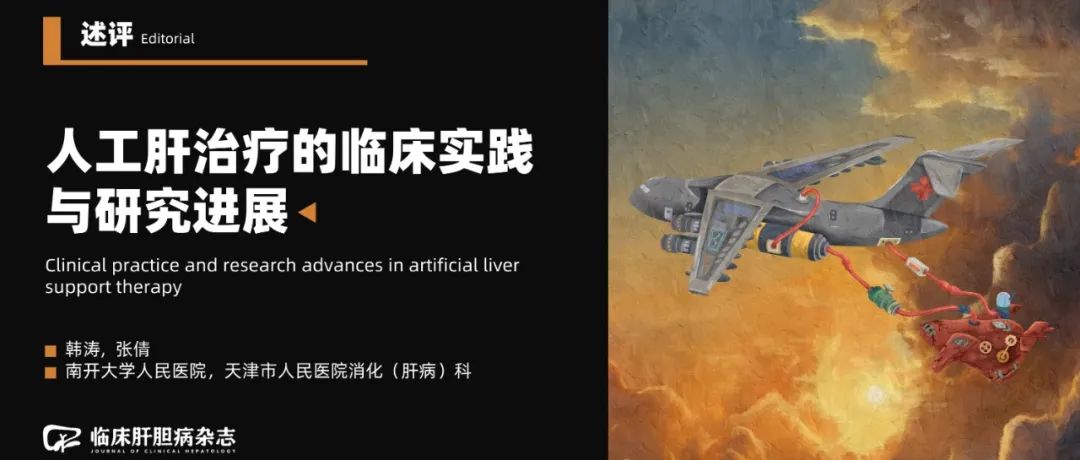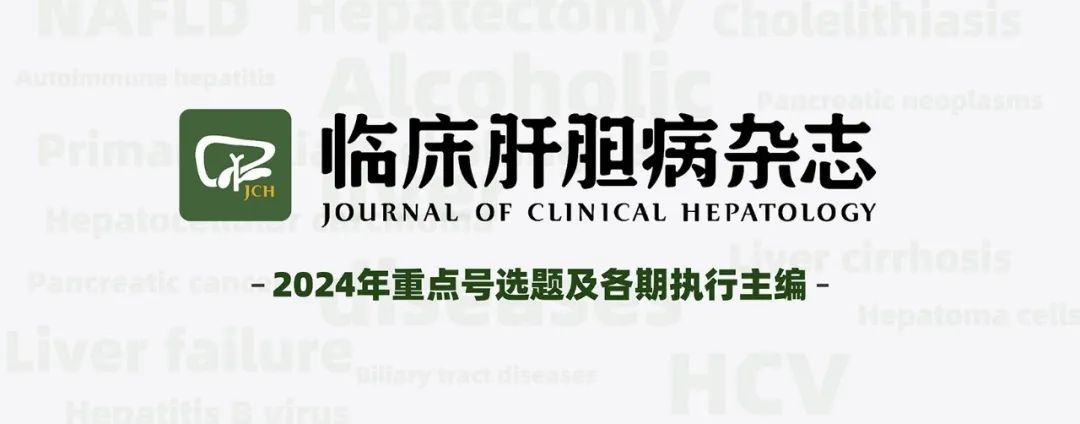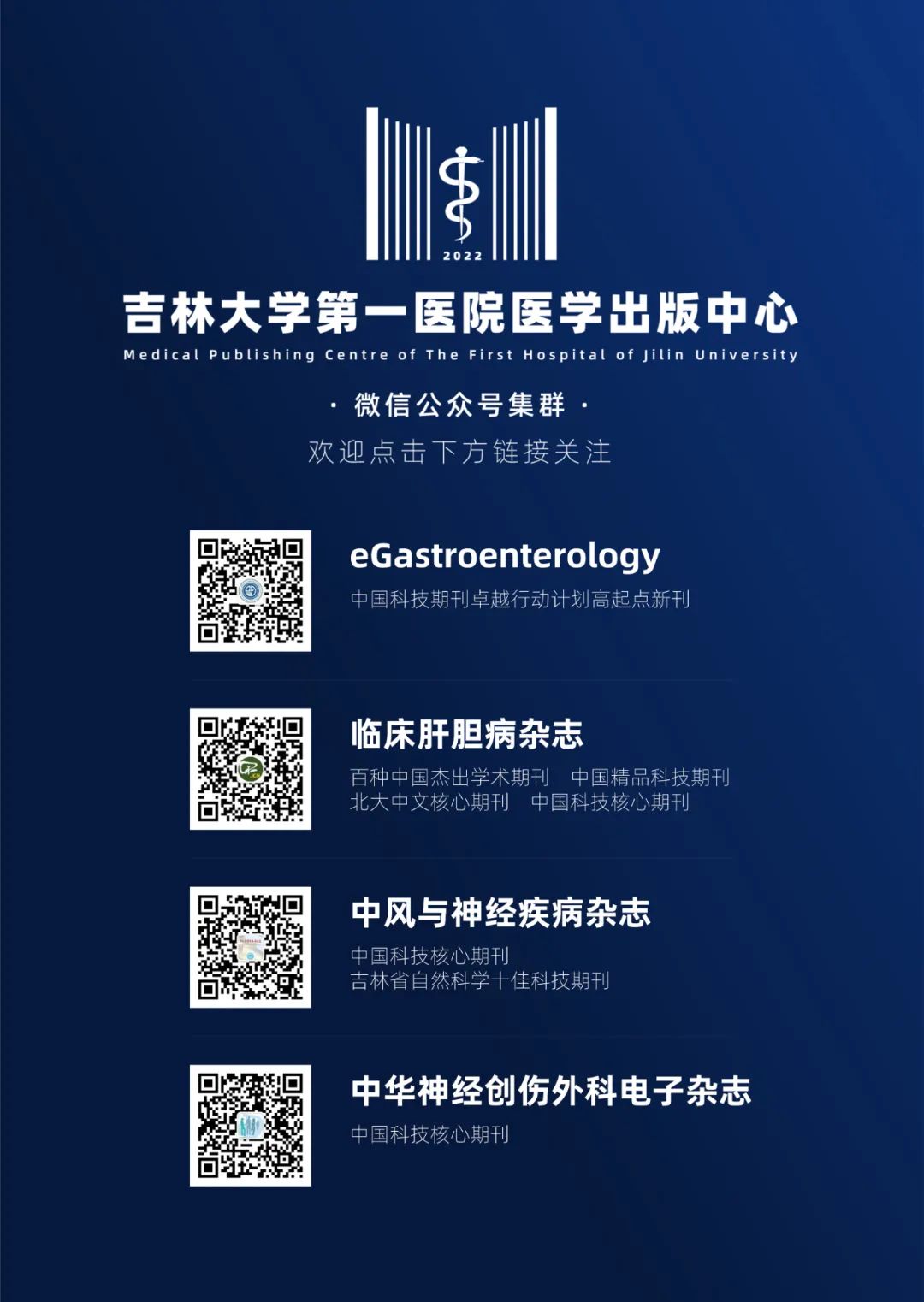

Early-stage liver failure refers to a state of disease where the patient’s liver function deteriorates sharply, posing a risk of liver failure but not yet meeting the diagnostic criteria for liver failure. Early warning of the risk of liver failure and timely intervention can help improve patient prognosis and reduce the economic burden on patients. In countries like China and other Asian nations, the main cause of liver failure remains HBV infection, and most studies on early-stage liver failure mainly focus on HBV-related acute-on-chronic liver failure (ACLF); while in Western countries, alcoholic hepatitis-related ACLF is predominant. In recent years, the concept of pre-ACLF and early intervention has gradually become a hot topic, and this article will focus on the current research status of pre-ACLF and artificial liver treatment.

1Concept and Diagnostic Criteria of Pre-ACLF
ACLF is a type of acute liver failure that occurs on the basis of chronic liver disease and cirrhosis, characterized by multi-organ failure in the progression phase, with a poor prognosis and a mortality rate as high as 30% to 70%. Common triggers for acute liver decompensation include HBV reactivation, acute HAV/HEV infection, excessive alcohol consumption, and acute bacterial infections. These triggering factors are common in Asian populations, while in Western populations, alcohol consumption and bacterial infections are the typical triggers. Due to differences in the underlying causes and clinical characteristics of ACLF in different regions, a unified diagnostic standard for this disease has not yet been established in China, the Asia-Pacific region, and Europe and America. In the existing guidelines and consensus, the diagnosis of ACLF is based on clinical symptoms and biochemical indicators showing liver failure (Asia-Pacific Hepatology Association consensus and Chinese standards) or characterized by liver and extrahepatic multi-organ dysfunction (European Association for the Study of the Liver); regardless of the diagnostic criteria used, the short-term mortality rate of late-stage patients is significantly higher than that of early and mid-stage patients, hence early diagnosis and treatment are crucial for improving the prognosis of liver failure patients.
Based on the survival advantage of early diagnosis and treatment, it is crucial to promptly assess patients in the early stage of liver failure. Hepatologists in different regions have proposed their own criteria for assessing pre-ACLF based on clinical experience. The “Guidelines for Diagnosis and Treatment of Liver Failure (2018 Edition)” introduced the concept of pre-ACLF and corresponding clinical features: (1) extreme fatigue with significant anorexia, vomiting, and abdominal distension; (2) a significant increase in ALT and/or AST, progressive jaundice deepening, with TBil levels between 85.5 and 171 μmol/L or an increase of ≥17.1 μmol/L per day; (3) bleeding tendency with prothrombin activity (PTA) between 40% and 50% and INR <1.5. This diagnostic standard emphasizes that a significant rise in ALT and AST is a hallmark of pre-ACLF, while defining the extent of TBil elevation and PTA decline, which are closely related to the pathological changes of pre-ACLF. In a multicenter, prospective cohort study of patients with chronic liver disease and acute exacerbation, the 6-month cumulative survival rate of pre-ACLF patients meeting the above diagnostic criteria was 96%, with only 20% progressing to ACLF within 28 days. Therefore, the diagnostic criteria for pre-ACLF in this study were not validated, and multivariate regression analysis showed that the factors influencing pre-ACLF in non-cirrhotic/compensated cirrhosis and decompensated cirrhosis differ; thus, different diagnostic criteria may be needed for pre-ACLF patients based on different liver disease backgrounds. Western scholars such as Trebicka have proposed that acute decompensated cirrhosis is a disease with three different disease courses and two main pathophysiological mechanisms. The first course is pre-ACLF, primarily related to the rapid progression of systemic inflammation, which progresses to ACLF within three months, posing a high short-term mortality risk; the second course is unstable decompensated cirrhosis, occurring on the basis of rapidly progressing portal hypertension, including patients requiring frequent hospitalization unrelated to ACLF, with a lower and gradually worsening systemic inflammatory response and lower mortality risk. The third course is stable decompensated cirrhosis, including most patients admitted due to acute decompensation, with mild systemic inflammatory response and stable portal hypertension, requiring little hospitalization and having a low one-year mortality risk. Chinese scholars such as Tang have validated the above diagnostic criteria in patients with HBV-related pre-ACLF, with results largely consistent, but due to the rapid progression of HBV-related pre-ACLF, the mortality rate is similar to that of ACLF patients, suggesting that 28 days could serve as a time window for defining HBV-related pre-ACLF, though this conclusion still needs to be confirmed by further large-sample studies. Additionally, the Asia-Pacific Hepatology Association consensus indicates that the golden window period is one week before the onset of systemic inflammatory response syndrome (SIRS), and interventions during this golden window can prevent the progression of SIRS and the occurrence of organ failure, altering the disease progression. The golden window period is generally diagnosed as pre-ACLF. Research by Choudhury suggests that acute liver injury initially manifests as liver failure, with significantly elevated bilirubin (>12 mg/dL), which subsequently leads to SIRS and infections, resulting in multi-organ dysfunction. The first week of liver failure is a strong independent predictor of the subsequent development of SIRS. The clinical recovery or deterioration of patients is associated with the persistence or resolution of SIRS. Therefore, patients with significantly elevated bilirubin and inflammatory markers should also be considered for inclusion in pre-ACLF.

2Pathophysiological Changes of Pre-ACLF
The European CANONIC study confirmed that the systemic inflammatory response is the main driving factor of multi-organ dysfunction, which is the typical pathogenesis of ACLF in Western patients. In recent years, it has been found that the pathological characteristics of HBV-ACLF include extensive hepatocyte necrosis, which can also trigger a systemic inflammatory response, leading to multi-organ dysfunction. Therefore, regardless of the cause, excessive systemic inflammatory response is a significant initiating factor for liver failure, and the occurrence and development of liver failure involve multiple stages, including acute onset, inflammatory injury, systemic inflammatory response syndrome, compensatory anti-inflammatory response syndrome, mixed antagonistic response syndrome, persistent inflammatory suppression, and hepatocyte necrosis followed by regeneration, with the timing and extent of these processes determining patient prognosis.
In patients with acute decompensation of cirrhosis, levels of white blood cells, plasma C-reactive protein, and inflammatory factors (such as IL-6, IL-8, IL-10) increase with the severity of liver injury. In pre-ACLF patients, white blood cell count, C-reactive protein levels, and inflammatory factors are significantly higher than in those who do not progress to ACLF, similar to those in ACLF patients. Acute liver injury causes the release of damage-associated proteins from dead hepatocytes and non-parenchymal cells, with bacteria translocating from the gut to the portal circulation, leading to the massive release of toxins and cytokines and widespread activation. The release of endotoxins and inflammatory factors from the liver into the bloodstream ultimately induces damage to other organs. The development or persistence of SIRS leads to the occurrence and progression of extrahepatic organ failure, particularly the coexistence of renal failure and liver failure. Therefore, SIRS plays a crucial role in the progression of liver failure. From a pathophysiological perspective, early-stage liver failure corresponds to the acute liver injury/acute decompensation and SIRS stage. ACLF patients progress from no SIRS to SIRS and subsequently to sepsis, which can be diagnosed as early-stage liver failure, representing an early warning phase for liver failure and should be actively intervened. If early diagnosis and intervention can be achieved at this stage, it not only aids in individualized treatment and the development of new therapies for patients but also helps improve the prognosis of liver failure patients.

3Mechanism of Artificial Liver Treatment for Pre-ACLF
In the treatment of early-stage liver failure, the focus is on etiology treatment and hormonal therapy. For pre-ACLF caused by hepatitis B, first-line antiviral drugs recommended include entecavir, tenofovir, prodrug tenofovir, and adefovir, which can rapidly suppress HBV replication and reduce inflammatory response, thereby preventing rapid progression to liver failure. On the basis of antiviral therapy, early application of hormones can effectively improve liver function, alleviate clinical symptoms, and shorten hospitalization time, but cannot suppress the disease progression of liver failure. Therefore, finding new treatment methods to improve the survival rate of pre-ACLF patients is an urgent clinical challenge. Research on the application of artificial liver treatment in pre-ACLF patients shows that it can effectively block the progression of liver failure and improve survival rates.
The artificial liver support system is an extracorporeal support system that temporarily replaces part of the liver’s function, utilizing mechanical, physicochemical, and biological devices to eliminate the accumulated inflammatory factors and harmful substances caused by massive hepatocyte death, preventing further liver and organ dysfunction, and improving the internal environment to create conditions for liver regeneration and functional recovery. The current artificial liver support systems are divided into non-biological, biological, and hybrid types, with non-biological artificial liver being the safest and most effective treatment currently widely used in clinical practice.
Artificial liver treatment can block the cytokine storm in the body, significantly improving liver function and reducing inflammatory factors, thus promoting the disease towards the “inflammation resolution-recovery” pathway and improving survival rates. For pre-ACLF patients who partially respond to hormones, artificial liver treatment can effectively improve liver function and reduce mortality. Compared to ACLF patients, pre-ACLF patients have better liver reserve function, making them a population that can benefit from artificial liver treatment, and pre-ACLF may represent the golden window period for this treatment.
In artificial liver treatment, plasma exchange (PE) is a commonly used mode. PE can effectively remove toxins and bilirubin from liver failure while replenishing essential substances such as coagulation factors that are deficient in liver failure, correcting metabolic disorders and promoting liver function recovery. However, the shortage of blood products limits the application of PE to some extent. Dual plasma molecular adsorption (DPMAS) can not only adsorb bilirubin and remove inflammatory mediators, improving liver function without consuming plasma. Studies have found that PE combined with DPMAS can effectively improve liver function in pre-ACLF patients and may prevent progression to liver failure. Besides the artificial liver treatment model of PE combined with DPMAS, there are also various non-biological artificial liver and their combination applications, such as molecular adsorption recirculation systems, continuous albumin dialysis, and component plasma separation adsorption, but the application value of these artificial liver treatment models in pre-ACLF patients still needs to be further confirmed by large-scale clinical trials.

4Improvement of Survival Rate with Artificial Liver Treatment in Pre-ACLF
The PREDICT study in Europe categorized patients with alcoholic cirrhosis and acute decompensation into three different clinical courses: (1) pre-ACLF patients can progress to ACLF, with mortality rates of 53.7% and 67.4% at 3 months and 1 year, respectively; (2) unstable decompensated cirrhosis patients requiring frequent hospitalization but not progressing to ACLF, with mortality rates of 21.0% and 35.6% at 3 months and 1 year, respectively; (3) stable decompensated cirrhosis patients who have not been readmitted and have not progressed to ACLF, with a one-year mortality rate of only 9.5%. In HBV-related pre-ACLF patients, although the levels of bilirubin, PTA, MELD score, and CLIF-C AD score are lower than those of ACLF patients, their short-term and long-term mortality rates are similar (90 days: 64.4% vs 63.0%; 1 year: 70.0% vs 65.1%). This evidence suggests that without timely and effective intervention to block disease progression, pre-ACLF patients have no difference in prognosis compared to ACLF patients. The artificial liver is a major means of treating liver failure, and advancing the treatment timing can significantly improve survival rates. Reports indicate that after artificial liver treatment for pre-ACLF, the 90-day cumulative survival rate reaches as high as 94.2%, significantly higher than that of ACLF patients (65.2%), with subgroup analysis results showing it is also higher than early (80.1%), mid-stage (42.1%), and late-stage (28.0%) ACLF patients; multivariate analysis indicates that pre-ACLF is a protective factor against mortality, with the 12-week mortality risk for pre-ACLF patients being only 0.238 times that of ACLF patients. For pre-ACLF patients who partially respond to hormones, the survival rate at 90 days after artificial liver treatment is significantly improved compared to conventional treatment (85.4% vs 41.5%, P<0.05). Therefore, compared to ACLF patients, pre-ACLF patients may benefit more from artificial liver intervention and represent a favorable population for this treatment.

5Clinical Issues to be Resolved in Pre-ACLF
The establishment of early-stage liver failure is aimed at better identifying and predicting the development of ACLF patients with organ failure in the early stages of the disease. Currently, there is no unified opinion on the concept and diagnostic criteria of “pre-ACLF” or the “golden window period”, and predicting the occurrence of ACLF remains a major clinical challenge. Despite considerable progress in research on early warning assessment indicators and systems, it is still in the exploratory stage. In terms of warning indicators, it should not be limited to clinical indicators; it is suggested to explore potential new early warning and prognostic indicators by combining inflammatory response, oxidative stress, liver regeneration-related indicators, and pathology, imaging, etc. Due to differences in etiology, the disease course, pathophysiological mechanisms, and outcomes of ACLF vary in different regions. In China, HBV-ACLF is predominant, and prospective and multicenter studies are needed to explore the early warning system, clinical course, and appropriate time window for the occurrence of pre-ACLF in HBV-related patients.

6Conclusion
Existing evidence indicates that hepatocyte injury in the early stage of ACLF is largely caused by SIRS, with elevated levels of various cytokines, low molecular weight toxins, and vasoactive substances leading to inflammatory necrosis of hepatocytes, further progressing to liver failure. These toxins not only exacerbate liver injury but also disrupt the environment conducive to liver regeneration. The released toxins can cause systemic inflammation, loss of adaptive immunity, and innate immunity, further leading to dysfunction of important extrahepatic organs. The rapid progression of early-stage liver failure and high short-term mortality necessitate enhanced early warning and preventive measures for early-stage liver failure patients, aiming to prevent multi-organ failure, which is currently the treatment consensus. Artificial liver treatment can block the cytokine storm in the body, thus promoting the disease towards the “inflammation resolution-recovery” path and improving survival rates. Although there have been numerous clinical studies on artificial liver treatment in early-stage liver failure, it is still in the exploratory phase. Future prospective and multicenter clinical trials are anticipated to continually explore the application of artificial liver treatment in early-stage liver failure, thereby further improving the survival rate of liver failure patients.

https://www.lcgdbzz.org/cn/article/doi/10.12449/JCH240202

Zhang Jing, Zhou Xinmin. Artificial Liver Treatment in Early Stage Liver Failure[J]. Clinical Hepatology, 2024, 40(2): 229-232


First Release on the Internet|The “Clinical Hepatology” 2024 Issue 2 “Clinical Practice and Research Progress of Artificial Liver Treatment” Special Issue (Executive Editor: Han Tao)

Review|Han Tao: Clinical Practice and Research Progress of Artificial Liver Treatment

“Clinical Hepatology” 2024 Issues 1-10 Key Topics and Executive Editor

■ China’s first professional journal on hepatobiliary diseases
■ Indexed in 13 major international databases including Embase and Scopus
■ One of the top 100 academic journals in China
■ A fine science and technology journal in China
■ One of the top 100 science and technology journals in China
■ Included in the World Influence Index Report of Science and Technology Journals
■ A core journal in Chinese University Library
■ A source journal for Chinese Science and Technology Papers
■ RCCSE Chinese Core Academic Journal
Official website:lcgdbzz.org
Official WeChat:lcgdbzz1985
Submission Inquiry:0431-88782044
Review Inquiry:0431-88783542
Reviewer Application Entry:Click to view
